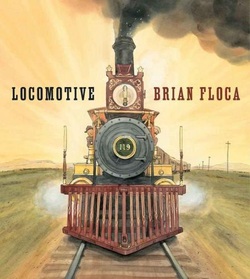
When the professor announced that there would be an oral presentation about this book and its use with a student, I jumped on the opportunity to sign up for it. My students love vehicles. We've done an entire study about the different ways we go. I had one student in mind to introduce this fantastic book to, R.H.
Unfortunately, the assignment required paying close attention to the visual literacy aspect of this book. We were assigned to read an article about purposeful questioning to help encourage visual literacy. R.H., although he loves trains, would not be able to help me complete this task.
I began to think who else I could use. I thought back to one of my students last year, F.C., who is now in kindergarten. F.C. is a highly motivated student. He is now beginning to read and write. Since he has just started to read books on his own, I thought it was best not introduce him to the complications of visual literacy before he mastered reading.
For this assignment to be successfully completed, I needed to work with a student who would benefit from visual literacy. This candidate would need to be one of our third graders who needs the skill of interpretting and reading visual components to prepare for their standardized exams. The pool I had to choose from would be a student who attended CAPA after school. I chose third grader, A.D., a student who was in my friend, Ms. Rita Tautonico's second grade class. She is highly motivated, enthusiastic, and very easy to work with.
The focus would be on a series of questions that helped the child understand and focus on the visual aspects of literacy. The article we read highlighted three types of questions to bring awareness to the graphics found in text:
- Determining Purpose
- Identify, Define, Label
- Analyze, Critique, Compare, Check
Getting the Student to Make a Connection
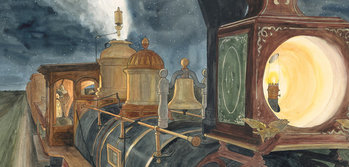
I wanted A.D. to make a connection before we started. So, I asked her a few questions before we began.
Mr. Andy: Have you ever traveled somewhere really far? Where?
A.D.: Yes. China
Mr. Andy: How did you get there?
A.D.: Airplane.
Mr. Andy: Have you ever been to California?
A.D.: No.
Mr. Andy: How would you get to California if you wanted to go now?
A.D.: By airplane
Mr. Andy: How do you think people got there before airplanes?
A.D.: Cars?
Introducing Locomotive
Mr. Andy: What do you think the book will be about looking at the cover?
A.D.: Trains.
Mr. Andy: What do you notice on this end page?
A.D.: The map.
Mr. Andy: Looking at this end paper, what do you think this book will be about?
A.D.: How they travel to California.
Mr. Andy: Why do you think the author put the map?
A.D.: To give more information about how they traveled.
Mr. Andy: What do you notice about the line?
A.D.: One part is red and another is yellow?
Mr. Andy: Why do you think that is?
A.D.: Maybe one side is Union Pacific and the other is Central Pacific.
Mr. Andy: What is the purpose of this graph below the map?
(Annie was not able to figure out the purpose of the graph below. I discussed with her about its purpose of giving info about each place the locomotive passed and its relation to distance above sea level.)
“Here is how this road was built…”
A.D.: They are dressed differently.
Mr. Andy: Why do you think that is?
(Annie didn’t know, so we spoke about why the men are so different. We referred back to the end page where they gave information about where the workers were from, specifically the ones that worked for the Central Pacific that came from China).
Mr. Andy: Why did the author use “CLANK CLANK CLANK?”
A.D.: It’s the sound the hammers make when the people worked.
“Here your trip begins…”
A.D.: You can get your lunch basket filled for 25 cents.
Mr. Andy: Does anything surprise you about the sign and lunch?
A.D.: It’s 25 cents. That’s really cheap!
Mr. Andy: Why do you think the author put the sign here? What can you learn from it?
A.D.: To tell us about how much food cost. Lunch was really cheap.
Mr. Andy: Could the author use a different way to tell you about how cheap lunch was a real long time ago?
A.D.: I think this was fine.
“She carries the crew that makes her run…”
A.D.: The Crew
Mr. Andy: What is a crew?
A.D.: A group of people that work. They work on the train. It tells about the people on the train that work to make the train go.
Mr. Andy: Who is in this crew?
A.D.: The brakemen, fireman, engineer, and the conductor.
Mr. Andy: What do you notice about the conductor?
A.D.: He wears a uniform. He’s holding something. An Anchor?
(Annie and I had a discussion about what a pocket watch is)
Mr. Andy: Why does the conductor have a watch?
A.D.: To tell time and know when to start the train.
“Up in the cab…”
A.D.: He wants to tell us about the engineer and how he works.
Mr. Andy: What do the pictures show you? (Identify Define Label)
A.D.: It shows steps of how the engines go.
Mr. Andy: Why is it important to have pictures and labels? (Analyze Critique Compare Check)
A.D.: If someone doesn’t know what the things are, they look at the pictures and labels to see.
“There’s a stove in one corner…”
A.D.: This is a toilet!?
Mr. Andy: Yeah. What did you learn about it?
A.D.: It goes down the toilet and in the floor!
(Annie is shocked, laughs, and says “ewww!” •A friend of Annie comes over to see what the commotion was and Annie proceeds to explain why she is disgusted.
“And when the train is stopped…”
A.D.: This is the extra information about what they eat in the Rail Road Restaurant.
Mr. Andy: Could the author give readers a different way of learning what they could eat?
A.D.: He could just put it here (pointing to the text above).
Conclusion
I asked A.D. if she wanted to take a break and continue the next day. But, she enjoyed it so much that she opted to continue. It was a pleasure to work with A.D. and sharing Locomotive with her.
Visual Aspect Maps Detailing the routes each is responsible for Signs Contains information about lunch prices, dinner menu, road caution sign Labels Detailing different crew members and parts of the train the engineer is responsible for, train parts Pamphlets Information of train times and distance | Evaluation Purposeful Questions were very helpful Brings attention to details that may be overlooked Pictures/Visuals contain a lot of information Information are not solely in the text. Signs contain subtle information A.D. needed to be directly told carefully look at pictures or else she would have missed important details. |
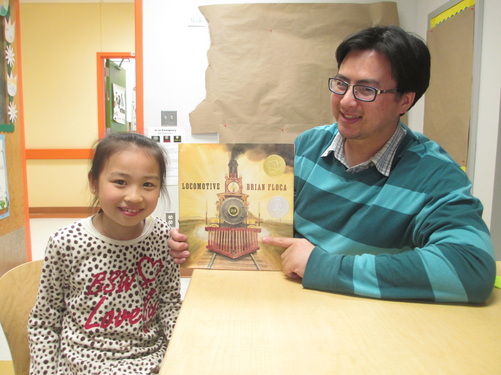
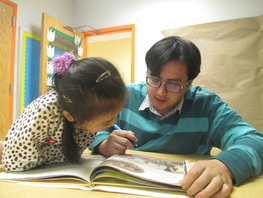
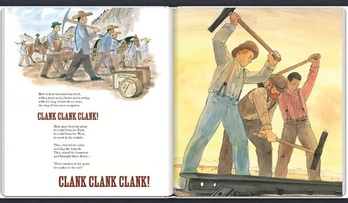
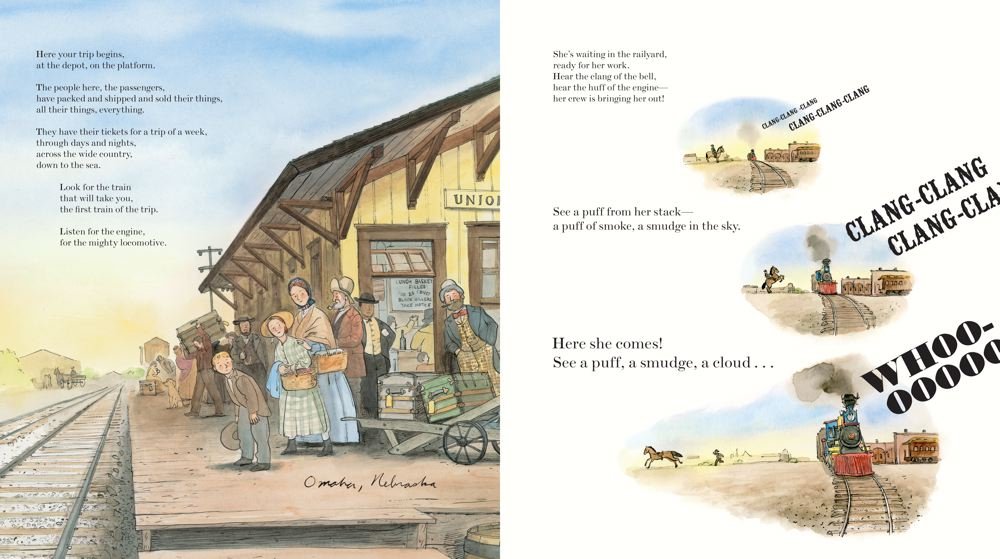
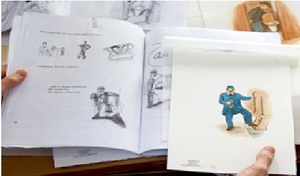
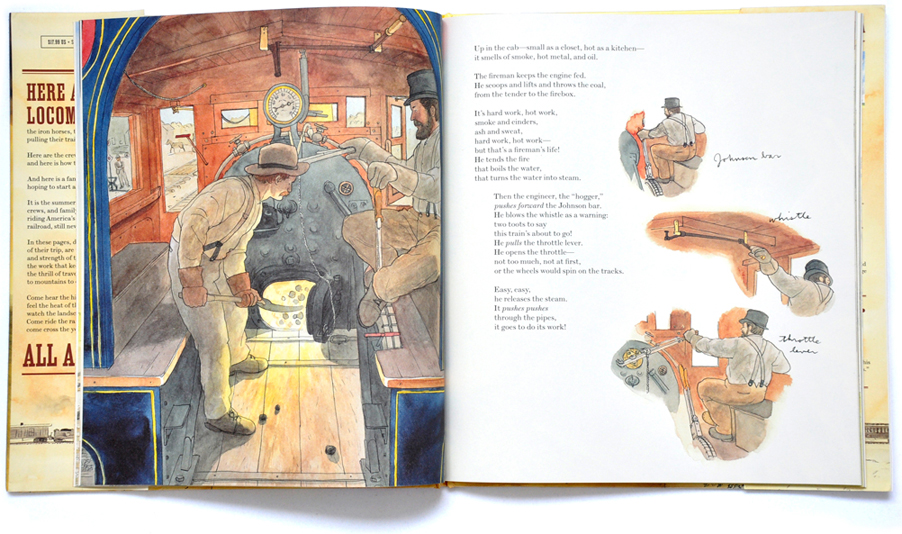
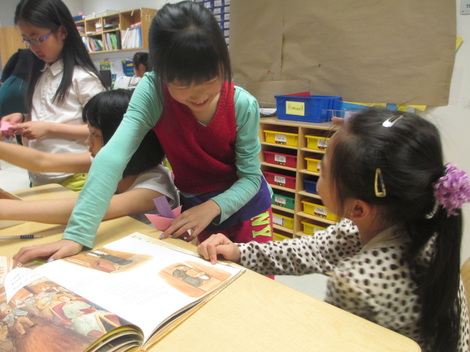
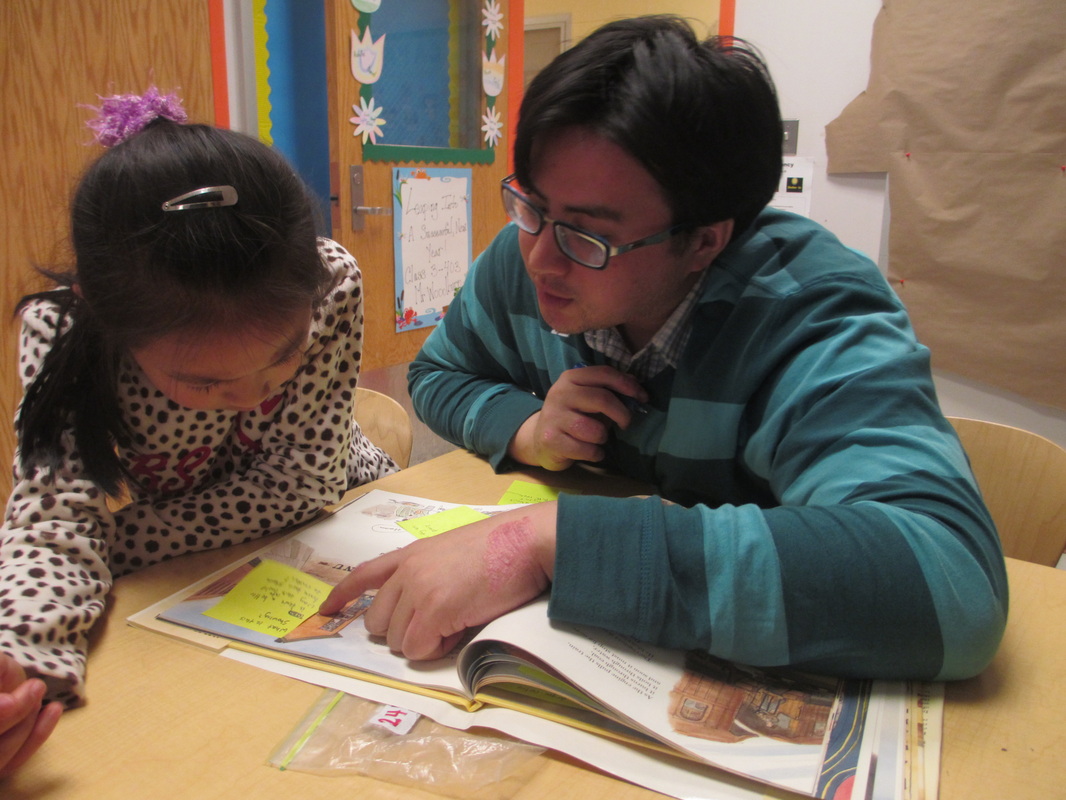
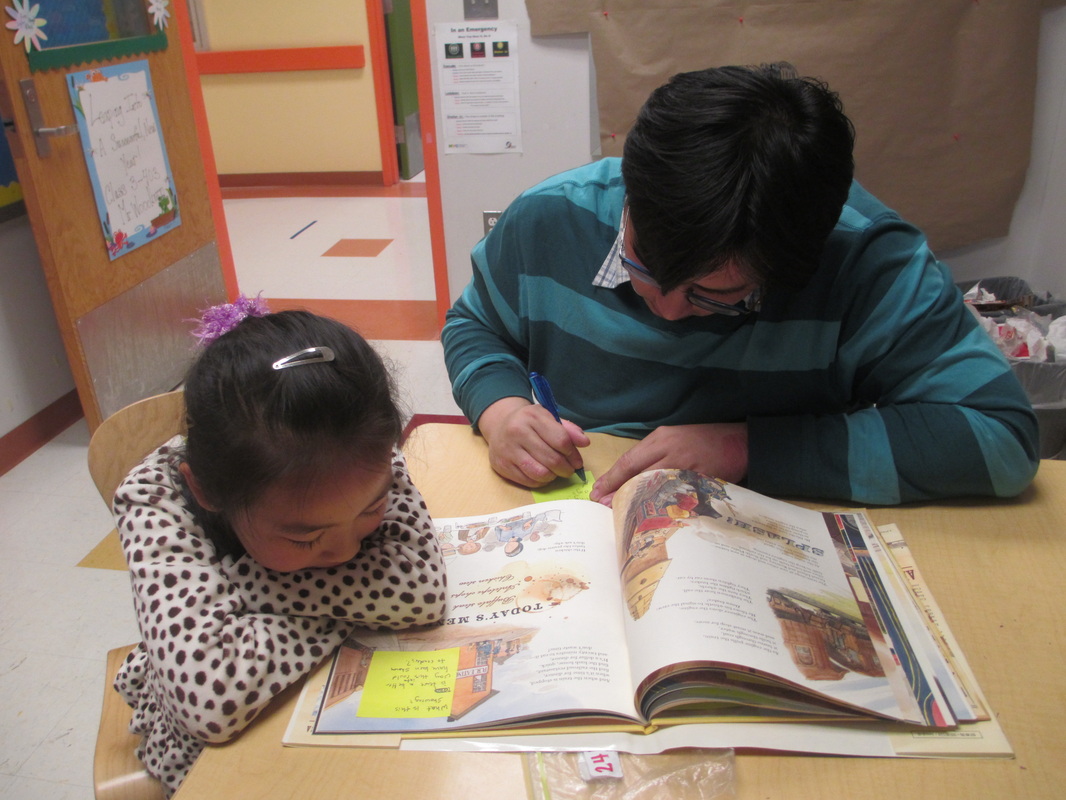
 RSS Feed
RSS Feed
